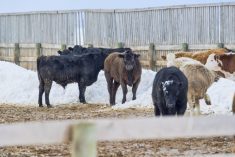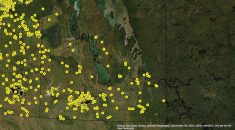Porcine Epidemic Diarrhea (PED) cases this year are thus far on a similar trajectory to peak case years of 2017 and 2019 the Manitoba Pork Council (MPC) said in a townhall meeting Dec. 7.
“Not to say that it will continue in 2019 and 2017 trajectories, however what we’re seeing now is not really what we’d like to see,” said Janelle Hamblin, MPC’s manager of swine health.
As of Dec. 7, confirmed cases sat at 21. Nineteen are within what MPC is calling the high-risk area, which encompasses a large chunk of Southeastern Manitoba. The majority of cases have been in this area in past years.
Read Also

Finally getting paid for sustainable farming?
Alberta project says they might have a line on a workable ecosystem credit model to reward farmers for sustainability, and Manitoba might be next
Two cases have also been confirmed in the Brunkild area this year.
PED is a virus from which older pigs often recover, but which often kills young piglets. It was first detected in Manitoba in 2014.
Cases reached their height in 2019 with 82 cases. Previously a record of 80 cases were found in 2017 according to MPC stats. In 2018, there were 17, and only three cases were found in 2020.
Hamblin showed 2021 weekly incidence of PED cases graphed with 2017 and 2019 stats. All three years show similar spikes between five and six weeks after the first case was detected.
Stats show “very strong similarities to the ‘17 and ‘19 case numbers in the first weeks of the outbreak,” said Hamblin.
Cases in the first six weeks of the 2021 outbreak (21) exceed that of the first six weeks in 2017 (17).
Of this year’s cases, nine are the first outbreak at their respective sites.
Hamblin, along with Glen Duizer, a vet with the CVO, calculated that within the high-risk zone, sites that have never been infected have a 17.5 per cent probability of infection. Sites that have previously been infected have a 32.4 per cent probability of infection.
Many factors have been shown to play a role, including farm age and design, area spread and biosecurity, Hamblin said.
The majority of infected sites were able to implement biocontainment measures at the onset of clinical symptoms, Hamblin said. Some sites put containment measure in place before animals showed symptoms.
MPC has been encouraging producers to do pre-movement testing for the virus, Hamblin added.
High-traffic sites like federal abattoirs are under surveillance, which has turned PED-positive dock samples. This is a good indicator of the level of virus shedding in the province, and it also validates cleaning and biosecurity practices these facilities have in place Hamblin said.
“Enhanced biosecurity is of the utmost importance,” she said.
















